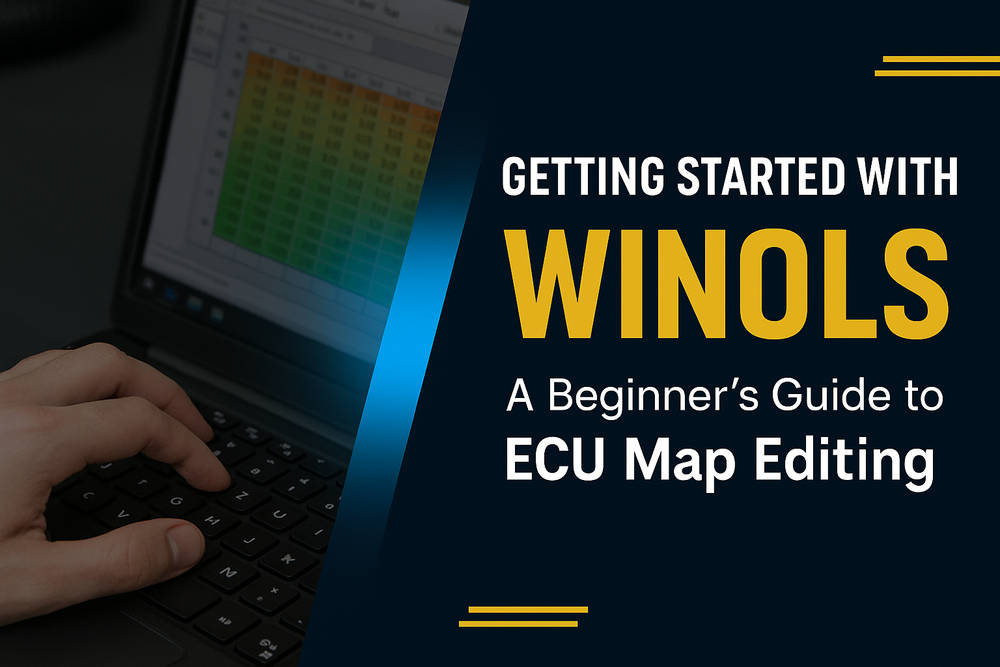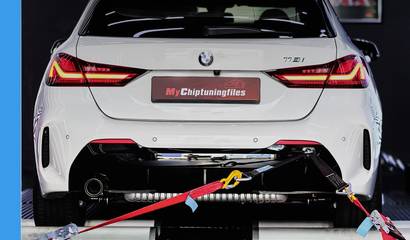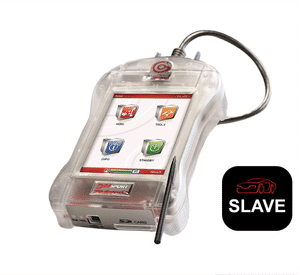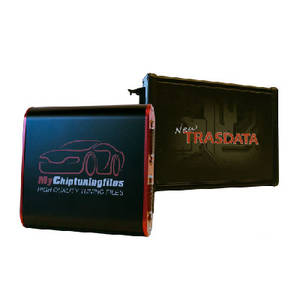Sunday 16 November

So you’ve finally decided to step into the deep end — you’ve been hearing about WinOLS all over forums, tuning groups, and probably from that one guy who swears he can make your diesel run like a sports car. But where do you even start with this thing?
Let me be straight with you: WinOLS ain’t some plug-and-play app where you click a button and magically make 50 more horsepower appear. Nah, it’s more like the tuning world’s version of Photoshop — crazy powerful, but only if you know what you’re doing. And yeah, the learning curve is real. But once you get a grip on it, it opens up a whole new level of control.
So this guide is for you — the beginner, the curious, the "I’ve got no idea what a hex value is but I wanna learn" kind of tuner. We'll go slow, we'll explain stuff in real-world terms, and by the end, you’ll know what WinOLS is, how it works, and what to expect as you start learning ECU map editing for real.
So, What Even Is WinOLS?
In plain terms: WinOLS is a map editing software created by EVC. It’s used by tuners to modify the firmware (or software) inside an ECU. That software controls everything from fueling and ignition timing to boost pressure, torque limits, and so on.
When you use a tool like Autotuner, KESS, KTAG, or Dimsport, you’re pulling the ECU file out of the car — that file is often referred to as a "read." It’s raw data. What WinOLS does is help you make sense of that raw data so you can edit it properly.
WinOLS doesn't hold your hand. It doesn’t tell you where your boost map is or what your injection duration table looks like. You’ve gotta dig. You’ve gotta learn the structure. It’s like being handed a pile of parts and tools, and then figuring out how to build a whole engine. That’s the charm. Or the frustration, depending on how you look at it.
The Interface (Yeah, It Looks Intimidating)
When you first open WinOLS, you’re probably gonna sit there for five minutes just staring at it. Buttons everywhere. Hexadecimal numbers. Graphs. Stuff that doesn’t make sense unless you’ve been decoding ECUs for years.
But breathe. Don’t shut it down yet.
There’s a basic flow that, once you get familiar, will feel a lot more manageable. Here’s how it usually goes:
- Open a Project / Create New: When you import a binary file (the one you pulled from the car), WinOLS will prompt you to start a new project. This is where you’ll work on that specific ECU.
- Checksum Handling: WinOLS supports checksum correction for a lot of ECUs, but not all. You may need external plugins or scripts if your checksum isn’t supported natively. It’s important because without a proper checksum, the ECU might reject the file or brick when you try to flash it back.
- Finding Maps: This is the real grind. You're looking through the hex or 2D/3D views trying to identify areas that correspond to actual tuning maps — like torque limiters, fuel injection maps, or turbo pressure control. WinOLS gives you a few tools to help, like map detection, but most of the time, it’s up to you to know what you’re looking for.
- Modifying Maps: Once you’ve found a map and defined its structure (X and Y axis, scaling, etc.), you can edit the values. Increase boost? Tweak fuel? Advance ignition? That’s all done here.
- Export the Modified File: After all your changes, export the modded file (usually as a .bin or .mod file), and then flash it back into the car using your tool of choice.
Also Read: Understanding Diagnostic Trouble Codes: What Your Car Is Trying to Tell You
Sounds simple, right? Well, not quite. But it gets easier.
Understanding the Different Views
There’s more than one way to look at data in WinOLS, and depending on what you’re comfortable with, you’ll likely switch back and forth between views.
Hex View
This is the raw data. Just a wall of numbers, mostly in hex format (00 to FF). Not super helpful when you’re starting out, but once you get into pattern recognition, this is where you’ll spot structures that give away maps.
2D View
This shows you a linear representation of the data. You’ll see spikes and valleys, which helps you figure out if a section is a single map, a group of maps, or just a calibration zone.
3D View
This is where things get fun. You can see full fuel or boost maps shaped like mountains and valleys. Super helpful for understanding how the engine behaves across RPM and load. Also makes it easy to compare stock and modified versions visually.
Table View
If you’ve set the axes and scaling correctly, this is where WinOLS shows your map in numbers. Now you can actually edit values with precision. For example, changing a fuel injection map to add more fuel at higher RPMs or adjusting the torque request map for better throttle response.
Common Map Types You’ll Be Working With
Alright, let’s get into some real-world stuff. When tuning most modern diesel or petrol engines, these are the maps you’re most likely to come across and tweak:
- Driver’s Wish Map – Controls throttle request based on pedal input.
- Torque Limiter – Limits how much torque can be delivered, often used to comply with emissions rules.
- Smoke Limiter – Limits fuel based on available air, often a target in diesels.
- Boost Control Map – Tells the turbo how much pressure to generate under different conditions.
- Injection Quantity Map – Controls how much fuel to inject, often tied to performance and efficiency.
- SOI (Start of Injection) – Dictates when the injectors open; adjusting this impacts combustion efficiency and noise.
- Rail Pressure Map – Controls pressure in the fuel rail, often raised for performance tuning.
Now, here’s the thing — these maps aren’t labeled. It’s not like WinOLS shows a file and says, “Hey, here’s your smoke limiter!” You’ve gotta know how to find them, and that’s where the real tuning skill comes in.
How Do You Learn All This?
Yeah, that’s the big question, right? WinOLS is powerful, but you’re not born knowing this stuff.
Here’s a few ways most tuners get started:
1. Compare Stock vs Modded Files
A great way to learn is to grab a known tuned file for the same ECU and compare it with the stock version. WinOLS lets you align both files and see where changes were made. It’s like reverse engineering — you start to see patterns, learn which maps were touched, and how they were changed.
2. Online Courses & Forums
There are paid courses that go deep into WinOLS training. Some are worth it, some are trash — do your research. And don’t underestimate forums. Communities like ECUConnections, DK (Digital Kaos), or even tuning subreddits can be goldmines of info.
3. Damos/A2L Files
These are files from OEMs that basically label everything inside the ECU software. If you can get a Damos for your ECU, it’s like getting the blueprint. You’ll see all the map names, axis definitions, scaling, and more. But they’re hard to come by and often expensive.
Also Read: The Benefits of Stage 1, Stage 2 & Stage 3 Tuning for Your Car
Pitfalls and Rookie Mistakes
Let’s not pretend everything goes smoothly. Everyone screws up when they start. So let me save you a few headaches:
- Don’t flash unverified files — Just because someone sent you a tuned file doesn’t mean it’s good. Bad tuning can damage your engine.
- Backup everything — Always, always make a full backup of the original file and EEPROM if possible.
- Checksum matters — Don’t skip checksum correction. If you flash a file with a bad checksum, you could brick the ECU.
- Don’t chase peak numbers — It’s tempting to go all out with fuel and boost, but drivability and reliability matter more. Start conservative.
- Document your changes — WinOLS lets you make notes. Use them. One day, you’ll come back to a file and have no clue what you did if you don’t.
Is WinOLS Worth Learning?
Short answer: Hell yeah.
It’s hard, no doubt. But if you’re serious about tuning, learning WinOLS gives you full control. You’re not relying on someone else’s files or guessing what a preset tool is doing. You’re writing your own logic, optimizing engines your way, and building a real skill.
Plus, once you understand WinOLS, you can apply that knowledge across different platforms and tools. It's a foundation.
Ready to Grow? Start a Chiptuning Business with MyChiptuningfiles
If you’ve been thinking about stepping into the world of car performance, now is a great time to start a chiptuning business. With MyChiptuningfiles by your side, it’s easier than ever to get started—even if you’re new to ECU tuning.
We provide high-quality tuning files made by experienced professionals using trusted tools like WinOLS. Each file is carefully tested for power, torque, and fuel efficiency, so you can offer upgrades that your customers will truly feel.
No need to be a tuning expert. Just upload your client’s original ECU file through our simple platform, and we’ll return a custom-tuned version ready to install. Fast, reliable, and designed for your success.
Whether you’re opening a new workshop, adding tuning services to your garage, or starting a side business, we give you everything you need to move forward with confidence. Our support team is here to help whenever you need guidance.
With MyChiptuningfiles, you’re not just offering tuning—you’re building a business on quality, trust, and proven results.
Take that first step today. Start a chiptuning business with MyChiptuningfiles and grow with the right tools and a team behind you.
Final Thoughts
Look, WinOLS isn’t something you’ll master in a weekend. It's a journey. You’ll spend hours looking at maps, testing changes, flashing files, maybe bricking an ECU once or twice (hopefully not, but it happens), and rebuilding your confidence. But over time, it all starts clicking.
Start small. Stick to one ECU platform and learn everything you can about it. Use known files to reverse engineer. Study your logs. Ask questions. And above all — don’t be afraid to mess up. That’s how everyone learns.
By the time you’re 20 or 30 cars in, you’ll look back and laugh at how confused you were at the beginning.
So yeah — fire up WinOLS. Get that project going. You’re already on the path.
news.related_news
Chiptuning tools
Whether you own a car, truck or tractor: we have the best equipment and software for tuning your petrol and diesel engine. With our chiptuning tools it is possible to easily read out the original engine software of your vehicle and upload it to our website. And then it's up to us to provide you with high-quality and customized chip tuning files. Curious about our range of chiptuning tools? Check it out via the button below!









